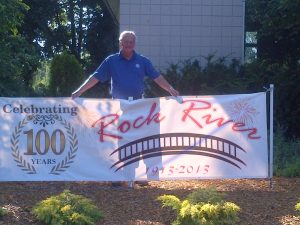There were possibilities for Chicago golfers to make significant history in Friday’s final round of the 19th Illinois Women’s Open at Mistwood in Romeoville.
Berwyn’s Nicole Jeray tried to become the first professional to win event three times. Burr Ridge’s Samantha Postillion hoped to give her family a fourth IWO titles, her mother Kerry having won three times in the 1990s.
Well, Postillion led for most of the final round and Jeray made it to a playoff, but neither could overcome Elise Swartout. She became the fifth Michigan golfer in the last six years to win the premier Illinois event for women golfers.
Swartout, who played collegiately at Western Michigan and splits her residence now between Ann Arbor and Orlando, FL., shot the day’s low round – a 3-under-par 69 – and beat Jeray with a four-foot birdie putt on the second hole of their sudden death playoff. Swartout set up the winning putt with a 58-degree wedge shot from 82 yards.
In her third year as a professional Swartout picked up her first win. She’s in the Ohio Women’s Open next week, then goes to LPGA qualifying school. Swartout had struggled on the LPGA’s satellite Symetra Tour and spent this year playing in state opens and Canadian events.
“This year has gone really well,’’ she said. “Everything’s clicked. I’ve been playing real solid, and I knew I had it going. Everything was coming together except for winning.’’
She took care of that problem on Friday, putting pressure on the leaders with a starting time an hour earlier than theirs. Postillion led through 11 holes, then made bogey at No. 12 and triple bogey six at the par-3 13th. She faded to a solo fifth-place finish as the low amateur in the field.
Only Jeray, playing with Postillion in the final twosome, was up to Swartouot’s challenge after the start of play was delayed an hour by early morning rains. Her only time at the top of the leaderboard came when she holed an 18-foot birdie putt on the final hole to force the playoff.
“That was cool,’’ said Jeray, the IWO champion in 1998 and 2003. “Win or lose I was happy to get into the playoff. Of course I wanted to win it, but these young kids are fearless. (Swartout) hit it tight on the first and second holes.’’
Unlike her LPGA Tour events Jeray rode a cart in her rounds with her mother Bridget as only a nominal caddie. The most critical part of her week may have been a three-hour putting session with Dr. Jim Suttie, the swing guru who moved his base to Mistwood earlier in the week.
Jeray, who picked up $3,000 for finishing runner-up to the $5,000 that Swartout earned for winning, returns to the LPGA Tour at Richmond, Va., in two weeks and then has events in Canada and Portland. They’re critical career-wise for the 42-year old Jeray – the only Chicago player to make it to the LPGA circuit in the last two decades.
“I’ve got to get in the top 100 to get into the Evian (Masters),’’ she said. “I’m 111th now, but I can do it if I can putt.’’


